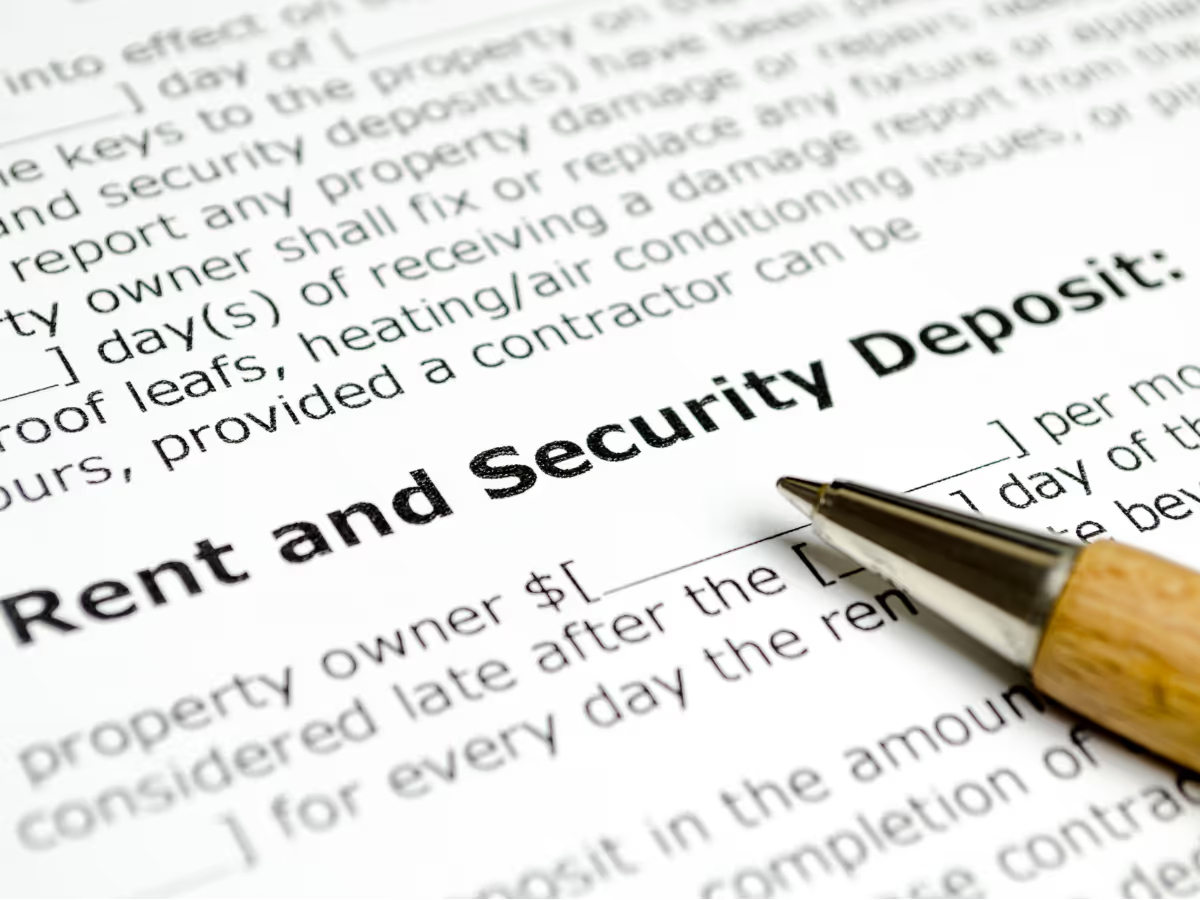What Are Security Deposit Best Practices for a Landlord?
As a landlord, you probably already know that requiring a security deposit for a residential rental property is a common best practice. But questions abound, including: How much should you charge? How should you incorporate the security deposit into your lease agreement? And what constitutes a violation that would justify keeping a portion or all of your resident's deposit?
Today, we’re going to answer each of these questions so you’re armed with the practical tips and know-how to collect and manage your resident’s security deposit effectively. Let’s get started with the most important question first: how much should your deposit be?
How Much Should a Landlord Collect for a Security Deposit?
The total amount of a residential rental security deposit can vary widely, however, there are a few solid ways to approach this first task.
Some landlords prefer charging a flat rate, making the matter of communication easy and straightforward. Other landlords opt for a percentage of the total monthly rental rate which allows for more customization to their specific property. Many landlords find that charging the equivalent of one month's rent at the time of lease signing strikes a good balance.
There are pros and cons of each method. Let’s explore them together:
Flat Rate
Pros:
- Both you and your residents know the exact amount upfront
- Easy to explain and enforce
Cons:
- Less flexibility to adjust for higher-risk properties or residents
- Residents may dispute fairness if perceived as high relative to rental rate
Percentage of Rent
Pros:
- Proportional to the property's value and the resident's financial commitment
- More flexibility to adjust based on perceived risk
Cons:
- Can be confusing or seen as arbitrary by residents
- Requires clear explanation and justification
- Amount may not cover extensive damages if the rent is low
Other best practices for setting the security deposit amount include:
- Reviewing local laws and regulations, which may cap the amount you can charge.
- Considering the condition and age of the property; newer or recently renovated properties may warrant higher deposits.
- Assessing the resident's rental history and credit score; higher-risk residents might justify a higher deposit.
How Do You Write the Conditions of a Security Deposit into a Lease?

Writing clear and comprehensive security deposit conditions into your lease agreement is crucial but the “how” can be overwhelming.
Here are some guidelines to keep in mind as you create your own:
- Use clear language: Avoid legal jargon and be straightforward about the terms you are creating for your residents.
- Outline specific conditions: Specify what constitutes damage and what does not. For example, normal wear and tear should not be grounds for withholding the deposit.
- Include deadlines: Clearly outline the timeline for when the deposit will be returned to a resident after their lease ends and the conditions under which deductions will be made.
- Refer to local laws: Make sure your security deposit terms comply with all state and local regulations. It can be very helpful to enlist the guidance of a legal professional if you are unsure exactly what details to include based on where your property is located.
You can find examples of language or templates online, such as those provided by landlord associations, law firms, or property management softwares. These templates can serve as a useful starting point, but it’s crucial to tailor them to fit your specific needs and double check to ensure they comply with local laws and regulations.
What Merits the Use of Security Deposit Funds?
The question of what qualifies as damage deserving of deposit funds is a big question your residents will undoubtedly have. Taking the time to define this upfront will save both you and your resident lots of time worrying and wondering. Plus, it will most likely save your property unnecessary damage that may otherwise have been considered acceptable.
In your lease agreement and other resident communications, it can be immensely helpful to outline common examples of damage that falls outside the definition of normal wear and tear.
Here are a few to consider:
- Carpet damage: Stains, burns, or tears that go beyond normal wear.
- Pet damage: Scratches, bite marks, odors, or stains caused by pets.
- Wall damage: Holes from nails or mounting, significant scuffs, or unapproved paint colors.
- Appliance damage: Breakage or excessive wear on provided appliances.
- Negligence: Damage resulting from resident neglect, such as mold from unreported leaks or failure to maintain cleanliness.
Include these scenarios in the lease agreement and provide examples to ensure residents understand what is expected of them. Providing these examples can go a long way in ensuring everyone is on the same page throughout the length of a lease term.
How to Collect and Retain a Resident's Security Deposit
Collecting and retaining security deposits involves several steps, all of which serve a specific and important purpose.
Let’s take a look at each step and the reason to include it:
1. Collection: Require the deposit at the lease signing, along with the first month's rent. Communicate that a resident’s occupancy is not guaranteed until and unless both of these amounts are received in full.
2. Separate account: Place the deposit in a separate account, as required by many state laws, to ensure it’s readily available when needed.
3. Documentation: Provide a receipt and keep detailed records of the deposit, including any deductions made.
4. Inspection: Conduct a thorough move-in inspection with the resident to document the property's condition, and repeat this process at move-out so you can compare and contrast the state of the property at each point.
5. Return: After the lease ends, inspect the property, document any damages, and itemize any deductions before returning the remaining deposit within the legal timeframe.
Managing a resident’s security deposit is one small but important part of comprehensive landlord accounting. Considering each of these steps ensures that you are successfully managing the finances of your property and setting yourself up for success.
Final Thoughts: Security Deposit Best Practices for Landlords
Managing the security deposit for your rental property doesn't have to be stressful! By setting clear terms, documenting conditions, and following legal requirements, you can protect your property and maintain a good relationship with your residents.
If you prefer not to handle these logistics yourself, hiring a professional property manager can be a worthwhile investment. Consider enlisting Evernest! We ensure everything is managed smoothly, from lease agreements to deposit returns, allowing you to focus on other aspects of property ownership!
Head to our website to find the Evernest team in your area and get started today!

